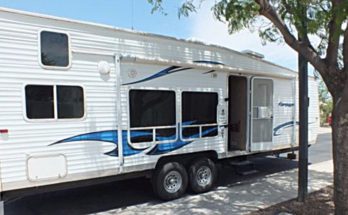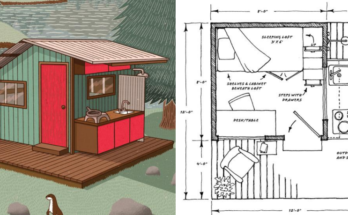There are many ways you can live in a tiny house. Many people park their tiny homes in a friend’s backyard or a rented lot for periods at a time. There are also those who own land and choose not to move and just place their tiny home on their own land. But there are also ways to live in a tiny house, trailer, schoolbus, shipping container, or whatever you have transformed into your home. There are tiny home communities where many of your needs are provided for you, such as electric, WiFi, showers, and even meals. Some have what they call, a community kitchen. While other tiny house dwellers have their own kitchens and everything they need within.
If you are thinking about living the tiny house lifestyle, it may be good to know which direction to go in when it comes to finances, especially those monthly and day to day finances. If you are an entrepreneur or work at home for any reason, you may not want someone else in control of your internet service. If you leave the house most days for work and own a smart phone with data, this may not be such an inconvenience.
Let’s explore the costs of the two ways of living in a tiny house; community, or on your own.
Living on your own or rented land in a tiny house can realistically cost you a few hundred dollars a month depending on the climate and where you’ve decided to park your tiny home. Tiny homes have small refrigerators, so you will probably spend more time and money at the grocery store because it’s harder to make a meal plan when your refrigerator can only hold but so much product.
Heating may be a bit expensive if your tiny home is not well insulated, so electrical heating can cost up to and above $150/per month, especially if your tiny home is mobile. If you build a tiny home to be stationery, you may be able to connect it to the local gas or electric department, which would bring costs down. But with tiny house living being mostly off the grid, sometimes for legal regulations reasons, hooking up to the local utility services may be a problem.
You must also consider the price of gas if you are traveling in your tiny home from park to park or lot to lot. You can end up spending a lot of money on gas, anywhere from $60/week and up just to get from one destination to the next. If you’re stationary this could be a non-issue.
Community living is quite different and can be different from one tiny house community to another. In most communitites, certain amenities are provided to those who live there, for example, there is usually a main house equipped with showers, community purchased grocery, a full kitchen, WiFi, and a community social room. Many communities have their own gardens to save on food for everyone living there. You may still be responsible for your own heat, but things like WiFi are usually a group effort. Grocery is often a group effort as most people who choose to live in a community, tend to build or rent tiny homes without kitchens. So you will save on food, gas because you are stationery, Internet, and often phone service.
Choosing between these two options depends on what kind of dream you have for you and your tiny home. If you are more of a solitary person, you may want to front the costs of living on a lot of land by yourself or with regular neighbors. You may want control over your own Internet and phone service. And many people don’t care for the processs of sharing showers. So think about what makes you happy. Though community living may be cheaper, it may be less convenient when it comes to your lifestyle.



